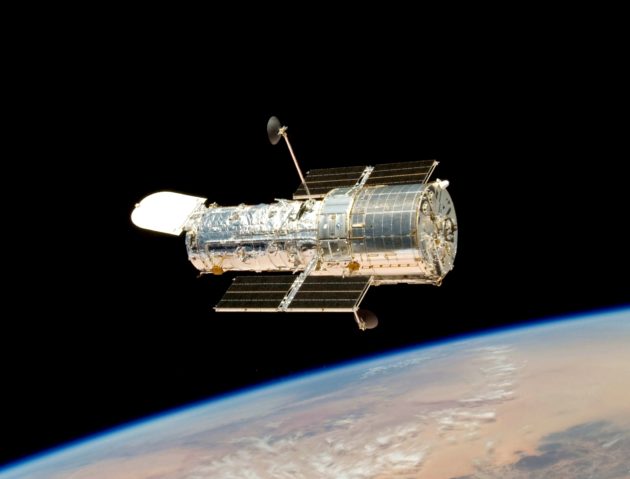
The 28-year-old Hubble Space Telescope is temporarily out of service, due to the failure of one of its gyroscopic pointing devices, but scientists say they’re working on a Plan B.
Today NASA confirmed reports that Hubble scientists such as deputy mission head Rachel Osten were passing along over the weekend: One of the telescope’s three active gyros had failed on Friday, which hampered the telescope’s ability to point at astronomical targets for long periods.
NASA said that Hubble’s instruments were still fully operational, and that mission managers were working to address the gyro issue:
“Built with multiple redundancies, Hubble had six new gyros installed during Servicing Mission-4 in 2009. Hubble usually uses three gyros at a time for maximum efficiency, but can continue to make scientific observations with just one.
“The gyro that failed had been exhibiting end-of-life behavior for approximately a year, and its failure was not unexpected; two other gyros of the same type had already failed. The remaining three gyros available for use are technically enhanced and therefore expected to have significantly longer operational lives.”
Only two of those enhanced gyros are currently running. The third one hasn’t been performing at the level required for operations, NASA said. Experts at NASA’s Goddard Space Flight Center and the Space Telescope Science Institute are analyzing the situation and conducting tests to find out whether the third gyro can be recovered.
If it can’t be recovered, Hubble will go into one-gyro mode, and hold the second working gyro in reserve. “While reduced-gyro mode offers less sky coverage at any particular time, there is relatively limited impact on the overall scientific capabilities,” NASA said.
The news came as a shock to the fans of the venerable space telescope, which has sent down jaw-dropping images and data to address cosmic conundrums ranging from planetary origins to the age of the universe. Most recently, the telescope helped scientists firm up their evidence for the first detection of a moon circling an exoplanet.
Hubble’s success is due in no small part to five servicing missions flown by space shuttle crews, including an initial visit in 1993 to fix the telescope’s flawed optics and the final visit in 2009 that replaced the gyros and provided additional upgrades.
Since the shuttle fleet was retired in 2011, there’s been no possibility to send a repair crew. The telescope has been on its own, but so far, the team’s scientists and engineers have been able to work around any maintenance snags.
Osten voiced confidence that such would be the case this time as well. Here’s how she laid out the prognosis in a series of tweets:
It’s true. Very stressful weekend. Right now HST is in safe mode while we figure out what to do. Another gyro failed. First step is try to bring back the last gyro, which had been off, and is being problematic.
— Dr. Rachel Osten (@rachelosten) October 8, 2018
Not really scary, we knew it was coming. The gyro lasted about six months longer than we thought it would (almost pulled the plug on it back in the spring). We’ll work through the issues and be back.
— Dr. Rachel Osten (@rachelosten) October 8, 2018
It’s not a difficult decision, @astrogrant: the plan has always been to drop to 1-gyro mode when two remain. There isn’t much difference between 2- and 1, and it buys lots of extra observing time. Which the Astro community wants desperately.
— Dr. Rachel Osten (@rachelosten) October 8, 2018
And it’s really the brilliant people @NASAGoddard who are now staffing the flight ops 24/7, and working the anomalous gyro behavior.
— Dr. Rachel Osten (@rachelosten) October 8, 2018
Astronomers have been hoping that Hubble will continue to operate long enough to cover the transition to NASA’s next-generation James Webb Space Telescope. As recently as last year, Webb was scheduled for launch in 2018, but a series of engineering setbacks and missteps has delayed liftoff until 2021 at the earliest.
Update for 12:50 p.m. PT Oct. 8: We’ve added NASA’s statement on the gyro issue.



